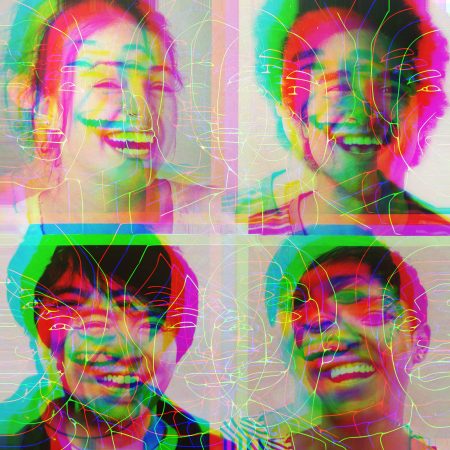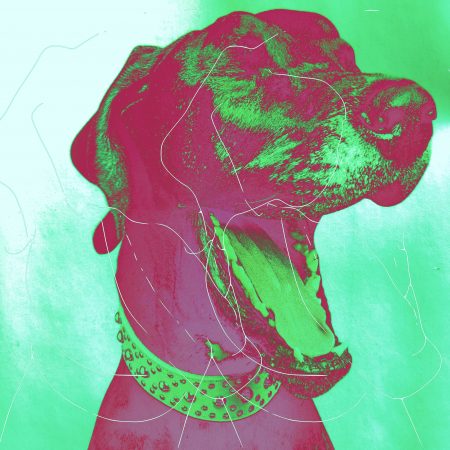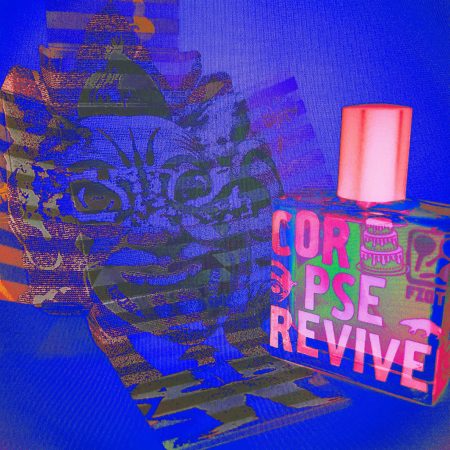
Laughter is science is laughter. Art and photo treatment by a_nose_knows for Bruno Fazzolari Corpse Reviver
To smile is like laughing, but to yourself. -Daniel, 5yo
Ask a paramedic (or a firefighter, or a mortician, or any other such witness) what people do after clinical death when they realize they’re still alive, and many will tell you that the patient, well, died laughing (yes, pun intended). We don’t yet know how the release of adrenalin and the fight-or-flight response translate into an automatic burst of laughter- in fact, despite its prominence in daily life, there is very little research on how, and why, we laugh—so allow me a random collection of #funfacts on laughter, evolution, and the euphoria of corpse revivals.

How laughter works. Art and photo treatment by a_nose_knows for Bruno Fazzolari Corpse Reviver
The neural basis of laughter is not very well known, but science today classifies human laughter into five different types: spontaneous (sincere), simulated (fake), stimulated (think tickles), induced (think drugs), and pathological. But this is what we know: when we communicate, the left side of our brain analyses the words and the logic structure, while the right side of the brain identifies what makes it funny; the motor center takes it from there and produces the actual movements of the diaphragm, the ha-has; all of this transmits back to the frontal lobe, which processes emotion (that is why we feel good after a bout of chuckles).
Laughter is older than speech- that’s why:
we cannot mix the two seamlessly; we tend to laugh at the end of a sentence, and not in between words
it stays with us; people who lose ability to speak retain their zest for a good laugh
it’s pan-social: it has little to do with language or humor, and more with forming and deepening alliances, friendships, and other interpersonal bonds, so
as a survival mechanism, our brain can innately detect fakers. How? Genuine laughter releases a soothing hormone and promotes a feeling of cooperation and affiliation in all exposed to it; if you feel nothing when someone laughs, chances are they’re faking it.

The “we” in “wheeeee”. Art and photo treatment by a_nose_knows for Bruno Fazzolari Corpse Reviver
We share laughter (as a non-verbal vocalisation of strong emotions) with a bunch of animals, as follows:
Rats, apart from being ticklish (not a PR firm in the world that can change the reputation of this rodent, but the idea of a tickle-induced giggle in a rat, you have to admit, is pretty cute), have been proven to laugh with delight, particularly when playing with humans; in both cases, pleasure comes out through high-pitched vocalisations (ultrasonic frequencies at or above 50 kilohertz)
The other four great apes—gorillas, chimpanzees, orangutans, and bonobos—also laugh, particularly when tickled, and find it easy to joke around
Dogs, too, can smile and laugh, in a motion and sound most similar to panting
Finally, dolphins emit a peculiar set of sounds during pretend play, when they’re having fun in a group (but not when they’re taking the real action); the sound seems to be travelling and thus contagious, just like human laughter.
Apart from the standard definition of “to laugh” (to show emotion [such as mirth, joy, or scorn] with a chuckle or explosive vocal sound; to find amusement or pleasure in something), the English language includes over 200 common expressions directly making use of smile, giggle, and laughter. Extremely handy for someone who laughs in death’s face.
Art and photo treatment by a_nose_knows for Bruno Fazzolari Corpse Reviver
Bruno Fazzolari Corpse Reviver, social and present, is itself a release, sitting, like laughter in neuroscientist’s Robert R. Provine, smack in the middle of theoretical musings and a very practical matter. In a way, Corpse Reviver is like a comedy act- written with intent and a great deal of knowledge, it depends in effect on the active participation of the audience. Got a hungry bunch? Then it’ll be a gourmand, filled to the edge with clear notions of edibles and drinkables. Got a group of intellectuals? Well, then, it’ll be a nouveau-vintage, unisex and elevated past the needs of the belly. Got a quirky nerd, like me? Then Bruno Fazzolari Corpse Reviver is a tongue-in-cheek, historically inappropriate, fun paradox of a niche fragrance: too jovial to be sombery (fruits, chocolate, vanilla), too mature to be cartoonish (woods, booze, herbs) and too young-fleshy to be dead (civet, what feels like ylang), it goes on as fun but stays as well-being.
Notes: Blood orange, Camphor, Whiskey, Rosemary, Tagetes, Dried fruits, Aniseed, Cypress, Dark chocolate, Vanilla, Civet
Other perceived notes: ylang, benzoin, red apple, green coffee, steel, poppy milk, tonka, cade oil, patchouli, quinine, wax, asafoetida and formaldehyde (?!)
Disclaimer: sample of Corpse Reviver by Bruno Fazzolari provided by Twisted Lily. Thank you much.
– dana sandu, Sr Contributor
Thanks to the generosity of Twisted Lily we have a sample of Bruno Fazzolari Corpse Reviver for three registered readers in the US ONLY. To be eligible, please tell us what surprised you most in dana’s review. Are you familiar with Bruno Fazzolari fragrances? Draw ends 12/20/2019
This is our Privacy and Draw Rules Policy
We announce the winners only on our site and on our Facebook page, so like Çafleurebon and use our blog feed… or your dream prize will be just spilled perfume…
Follow us on Instagram @cafleurebon @a_nose_knows @fragrantmirror @twistedlily360
